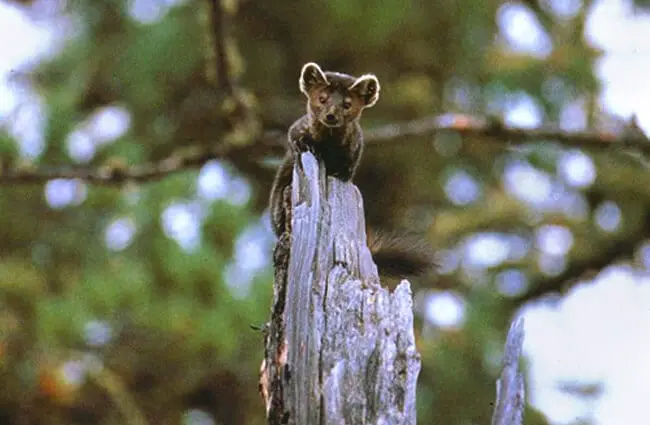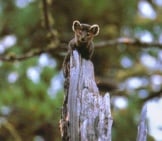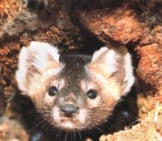The Sable is a small member of the Mustelidae family. These creatures are a species of marten, and other members in their family are weasels, otters, minks, ferrets, badgers, wolverines, and more.
They live throughout large regions of Russia and some of the surrounding countries. Though their populations are stable, hunting did reduce their overall range across Asia. Read on to learn about the Sable.
Description of the Sable
Sables are dark-furred creatures that look similar to weasels. They have short legs, elongated bodies, and relatively long tails. Their thick fur is usually brown or black, but they have a lighter patch on their throats.
Most of these creatures measure about a foot and a half in length, though their size does range. These little mammals weigh anywhere from a pound and a half to four pounds or so. Males are typically slightly longer and heavier than females are.
Interesting Facts About the Sable
These little predators might be cute, but you shouldn’t underestimate them! Learn more about what makes Sables so unique below.
- Delayed Implantation – These are one of the many different animals that utilize delayed implantation in reproduction. In delayed implantation, after an animal breeds they do not begin developing the embryo for a period of time. In this species, the delay lasts about eight months. Some other animals with delayed implantation include other members of the Mustelidae family, elephant seals, sea lions, bears, armadillos, and more.
- Varied Behavior – Under normal conditions, Sables spend their days foraging for food and patrolling their territory. However, if they face heavy hunting by humans or experience heavy snowfall these creatures will become active at night instead.
- Weather Resistance – These animals also display other unique behaviors when the weather is particularly harsh, which isn’t a rare occasion in Russia. If the going gets tough, these creatures hunker down and begin storing food in their dens to eat later when they cannot catch food.
- Coveted Coats – If you’re going to survive in the frigid winters of northern Asia you need some seriously good fur. Because Sables have such dense and soft coats of fur, humans began hunting them extensively long ago. Nowadays people do not hunt wild Sables as frequently, but instead raise them in farms specifically for fur production.
Habitat of the Sable
The Sable lives primarily in dense forests, though these include a wide variety of different forests, including spruce, pine, cedar, larch, birch, and more.
Sables live anywhere from sea level to high mountain ranges, though they do not inhabit areas above the tree line. Though they can climb if they need to, most forage along the forest floor and build their dens on the ground.
Distribution of the Sable
These little mammals live across much of Russia and into some of the surrounding regions. Their range extends from the area north of Kazakhstan east to portions of the coast. Though their distribution is wide, their populations are somewhat patchy, particularly in western regions.
Populations also live in Mongolia, Japan, northern China, and more. People also keep these soft-furred critters in fur farms in various regions, as well as in zoos across the world.
Diet of the Sable
Sables are carnivores, which means they eat mostly meat and few if any plants. However, when food is scarce, they do feed on berries, nuts, and fruits. Their diet usually contains mostly mice, squirrels, rats, chipmunks, birds, eggs, fish, rabbits, hares, and more. While hunting, they rely heavily on their hearing and sense of smell.
Sable and Human Interaction
Nowadays humans do not interact with wild Sables quite as frequently. Their level of human interaction varies based on where they live. Those individuals in the deepest uninhabited forests generally avoid human detection while humans hunt populations living closer to cities and towns.
Hunting used to impact these animals more heavily, but now all hunters must have proper permits. People also keep and breed them in farms for fur production. The IUCN lists the Sable as Least Concern.
Domestication
You might consider these animals as semi-domesticated. Humans have bred this species in fur farms, but not for a long enough period of time for us to consider them to be fully domesticated.
Does the Sable Make a Good Pet
No, Sables do not make good pets. Though they look cute, they have sharp little teeth and are quite capable of delivering a painful bite. In many places it is also illegal to own one as a pet.
Sable Care
In fur farms, Sables receive different levels of care based on the facility, many facilities give sub-par care. However, those in zoos live a lavish life in comparison.
Zoos provide them with large enclosures and plenty of hiding places. They also give them a variety of opportunities to dig, or provide them with artificial tunnels and dens.
Zookeepers also give these smart little creatures plenty of toys and environmental enrichment, like scents, hidden food, and puzzle feeders, to keep them mentally stimulated.
Behavior of the Sable
These little mammals vary their behavior slightly based on their environment. If the weather is harsh or they are close to human habitation, they are most active at night. Otherwise, they generally forage during the early morning and late evening.
This means they are primarily crepuscular or diurnal, and nocturnal when threatened by humans. They spend their time foraging for food and marking their territories with scent glands.
Reproduction of the Sable
Sables begin mating in the spring, but they delay the development of the embryo for approximately eight months. Once they begin development, it takes about a month for them to give birth, which means their full gestation period lasts about nine months in total.
Most litters contain three kits, though some contain up to seven. After about seven weeks, the mother begins feeding her young solid food and stops letting them nurse. It takes two or three years for the kits to reach sexual maturity.



![Drawing: "Sables squabbling" Drawing: "Sables squabbling" by: Alfred Brehm, from "Brehm's Life of Animals : a Complete Natural History for Popular Home Instruction and for the Use of Schools" [Public domain]](https://animals.net/wp-content/uploads/2019/07/Sable-4-650x425.jpg)



![Drawing: "Sables squabbling" Drawing: &Quot;Sables Squabbling&Quot; By: Alfred Brehm, From &Quot;Brehm'S Life Of Animals : A Complete Natural History For Popular Home Instruction And For The Use Of Schools&Quot; [Public Domain]](https://animals.net/wp-content/uploads/2019/07/Sable-4-162x141.jpg)

![Red Angus Closeup of a beautiful Red Angus cowPhoto by: U.S. Department of Agriculture [pubic domain]https://creativecommons.org/licenses/by/2.0/](https://animals.net/wp-content/uploads/2020/03/Red-Angus-4-238x178.jpg)












![Red Angus Closeup of a beautiful Red Angus cowPhoto by: U.S. Department of Agriculture [pubic domain]https://creativecommons.org/licenses/by/2.0/](https://animals.net/wp-content/uploads/2020/03/Red-Angus-4-100x75.jpg)

